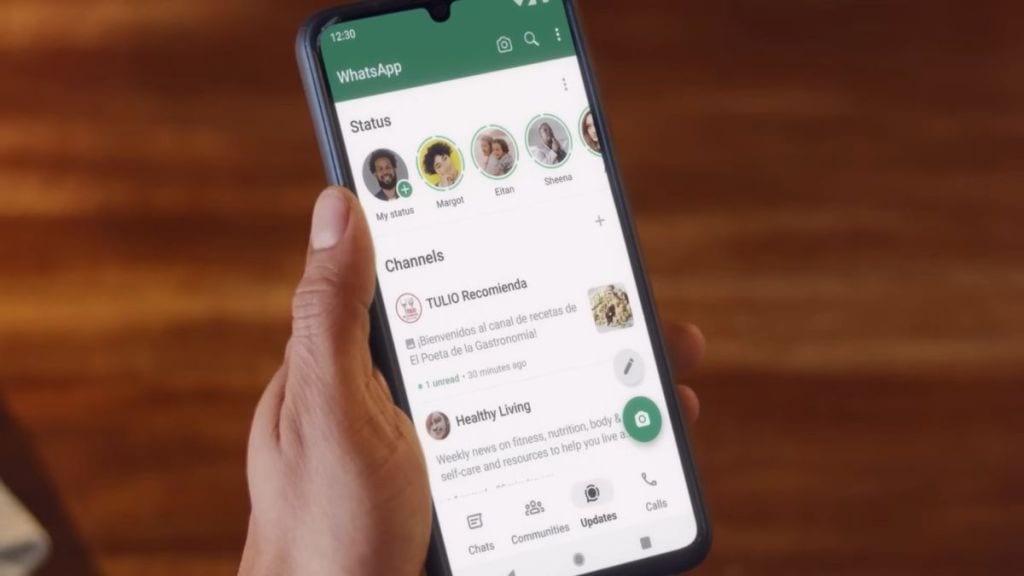Conversational commerce platform provider Attentive recently found that most marketers are redirecting their efforts away from brand building toward consumer retention. Seventy-four percent of respondents said they’re focusing on retaining existing customers by building loyalty.
Can Meta’s Whatsapp Channels step in and become brands’ loyalty-building tool of choice?
Available in 150 countries, WhatsApp Channels — a one-way broadcast tool for users to send texts, photos, stickers, videos and polls — has been adopted by a bevy of personalities already. The launch of WhatsApp Channels indicates a shift in the app’s positioning, making it a social media app rather than a messaging platform.
What does this move mean for brands that are already navigating a fairly crowded social media landscape?
Manesh Swamy, chief creative officer at LS Digital, expects it to become a handy tool to stay connected with audiences that are brand loyalists. WhatsApp has over 500 million users in India, ahead of YouTube (467 million), Facebook (around 315 million) and Instagram (230 million), as per Statista.
Cautioning against making early comparisons with other platforms, Swamy says, “It is better to view Channels as an updated feature and not a new platform. As a feature, it is a great private broadcast service for brands. The metrics for the new feature should be in terms of number of forwards and reactions (via emojis).”
Communication at scale
The new Channels feature addresses certain limitations that brands previously had on WhatsApp, according to Hareesh Tibrewala, joint CEO, Mirum. “Brands so far didn’t have the option to broadcast communication on WhatsApp, and even WhatsApp for Business was hugely restrictive in terms of what brands could communicate and their frequency. Channels removes that limitation, while also providing privacy to the end consumer since customer data is not disclosed to the Channel owner,” points out Tibrewala, emphasising that the feature could be a potential game changer for brand engagement.
Tibrewala adds that Channels will bridge a gap in the social media ecosystem. “On the one hand, we have platforms like Facebook and X that are fairly open. Then we had WhatsApp, a private one-on-one or community-based communication platform. With Channels, brands can communicate at scale and at the same time, followers’ actions and data are fully protected,” he observes. Further, there is no limit to the number of people that can follow a brand.
Learning from Threads
While these are still early days, there is some apprehension around WhatsApp Channels among marketers and advertisers, given Meta’s inability to capitalise on Instagram’s Threads and the initial surge of user interest. Tibrewala says part of the reason for this is that Threads tried to create a platform similar to Twitter (now X), which is still active and relevant. There was little innovation or differentiation. Threads, which saw 100 million sign-ups globally in the first week of launch, saw an 82% drop in daily active user count by the end of its first month. At its peak, the app had 44 million active users.
According to Venugopal Ganganna, CEO at Langoor Digital, the initial excitement surrounding Threads has given way to cautious optimism. Companies are still adding Threads in their communication strategy, but Meta could learn from its Threads experience and identify ways that will make Channels an important part of a brand’s social media strategy.
“WhatsApp Channels is still a niche offering and cannot replace the personalisation and interaction options that platforms like Instagram or Facebook offer. Aside from emojis, your followers have no way to interact or respond to your posts. Channels do not have automation or analytics as well, making it difficult to get insight into the performance of your posts,” remarks Ganganna. To make Channels a valuable social media tool, he recommends that WhatsApp relax the limitations, increase lead generation opportunities and create re-engagement avenues.
Harikrishnan Pillai, CEO and co-founder, TheSmallBigIdea, offers a different take, noting that Channels is far removed from the original idea of WhatsApp. “WhatsApp is primarily used for direct and personal conversations, and I don’t see the need for it to become a platform for one-to-many communication. An extension to the lack of interactivity is the absence of a comments section on WhatsApp, which is a feature that drives engagement on other social platforms. While WhatsApp can argue if it is a feature or a limitation, in a one-to-many scenario, there has to be a door for a two-way conversation,” argues Pillai. He adds that WhatsApp, with work conversations, personal conversations, groups and status, is already an overwhelming space, questioning the need for a feature like Channels.


